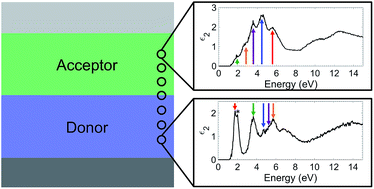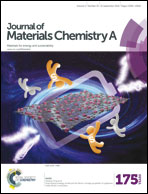Measurement of optical properties in organic photovoltaic materials using monochromated electron energy-loss spectroscopy†
Abstract
The optical and electronic properties of organic materials influence the functionality of all organic electronics. These properties can be measured in bulk materials easily, but determining the opto-electronic properties in thin films and at interfaces is challenging. In this report we describe how these properties can be measured with high spatial resolution using an optimized electron energy-loss spectroscopy (EELS) method in the scanning transmission electron microscope (STEM). EELS spectra were collected for poly(3-hexylthiophene) (P3HT), [6,6]phenyl-C61 butyric acid methyl ester (PCBM), copper phthalocyanine (CuPc), and C60. These organic materials are both susceptible to electron beam damage and commonly utilized in organic photovoltaics (OPVs). In order to prove that these spectra are representative of the pure materials and that the samples have not undergone any significant beam damage, the real and imaginary parts of the complex dielectric function obtained from these spectra have been compared to the same functions obtained using variable angle spectroscopic ellipsometry (VASE), a technique that should not induce any beam damage to the samples. Comparisons of these two data sets reveal good agreement in both measured peak intensities and their corresponding peak energies, thus validating this low-damage EELS acquisition method. EELS spectrum images were acquired from a CuPc/C60 bilayer structure to demonstrate that it is possible to collect spatially resolved EELS data from device-related structures comprised of these beam-sensitive materials.


 Please wait while we load your content...
Please wait while we load your content...